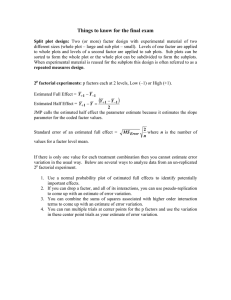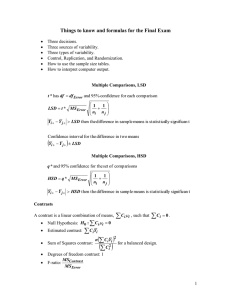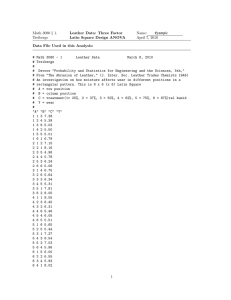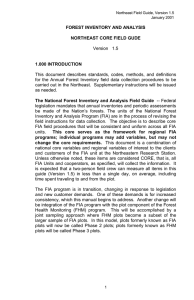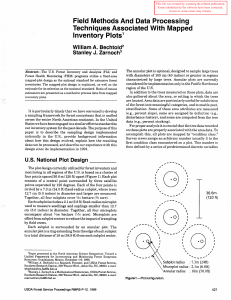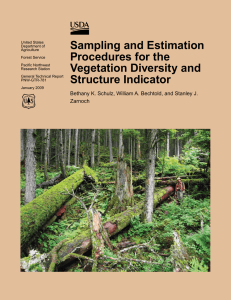Things to know and formulas for the Final Exam
advertisement
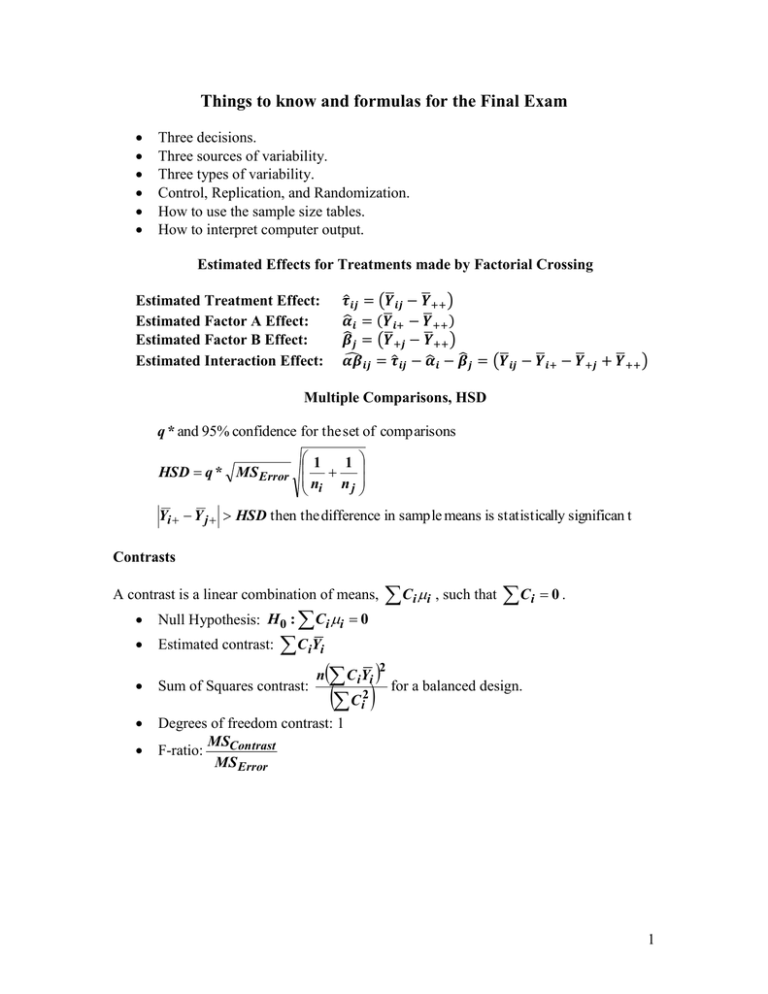
Things to know and formulas for the Final Exam Three decisions. Three sources of variability. Three types of variability. Control, Replication, and Randomization. How to use the sample size tables. How to interpret computer output. Estimated Effects for Treatments made by Factorial Crossing Estimated Treatment Effect: Estimated Factor A Effect: Estimated Factor B Effect: Estimated Interaction Effect: ̅ 𝒊𝒋 − 𝒀 ̅ ++ ) 𝝉̂𝒊𝒋 = (𝒀 ̅ 𝒊+ − 𝒀 ̅ ++ ) ̂ 𝒊 = (𝒀 𝜶 ̂ 𝒋 = (𝒀 ̅ +𝒋 − 𝒀 ̅ ++ ) 𝜷 ̂ 𝒊𝒋 = 𝝉̂𝒊𝒋 − 𝜶 ̂ 𝒋 = (𝒀 ̅ 𝒊𝒋 − 𝒀 ̅ 𝒊+ − 𝒀 ̅ +𝒋 + 𝒀 ̅ ++ ) ̂𝒊 − 𝜷 𝜶𝜷 Multiple Comparisons, HSD q * and 95% confidence for the set of comparisons 1 1 HSD q * MS Error ni n j Yi Y j HSD then the difference in sample means is statistically significan t Contrasts Ci i , such that Ci 0 . A contrast is a linear combination of means, Null Hypothesis: H 0 : Ci i 0 Estimated contrast: CiYi n C iYi Ci2 Sum of Squares contrast: Degrees of freedom contrast: 1 MSContrast F-ratio: MS Error 2 for a balanced design. 1 Blocking Make blocks so that within a block the experimental material is more homogeneous (similar, uniform). Sorting Sub-dividing Re-using Block Designs Randomized Complete Block Latin Square Split Plot Design: Two (or more) factor design with experimental material of two different sizes (whole plot – large and sub plot – small). Levels of one factor are applied to whole plots and levels of a second factor are applied to sub plots. Sub plots can be sorted to form the whole plot or the whole plot can be subdivided to form the subplots. When experimental material is reused for the subplots this design is often referred to as a repeated measures design. There are two sources of error variation in a split plot/repeated measures design, one for the whole plot and one for the sub plot. Center Points Use center points to quantify random error variation (variation among units treated the same) when you don’t want to replicate all the treatment combinations in a large experiment, i.e. in an experiment with many factors each at two levels. You can also test to see if the mean of the factorial treatment combinations is statistically different from the mean of the center points. t Y F YC 1 1 MS Error nF nC 2
